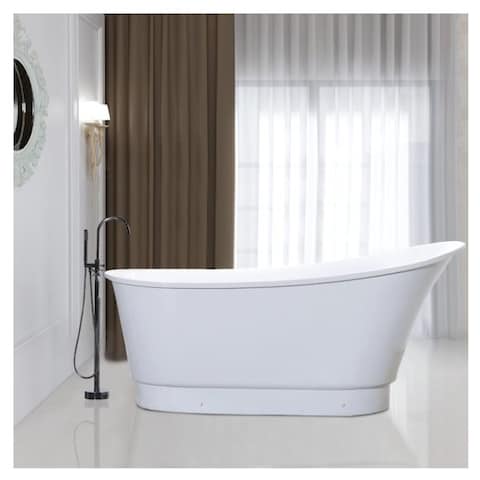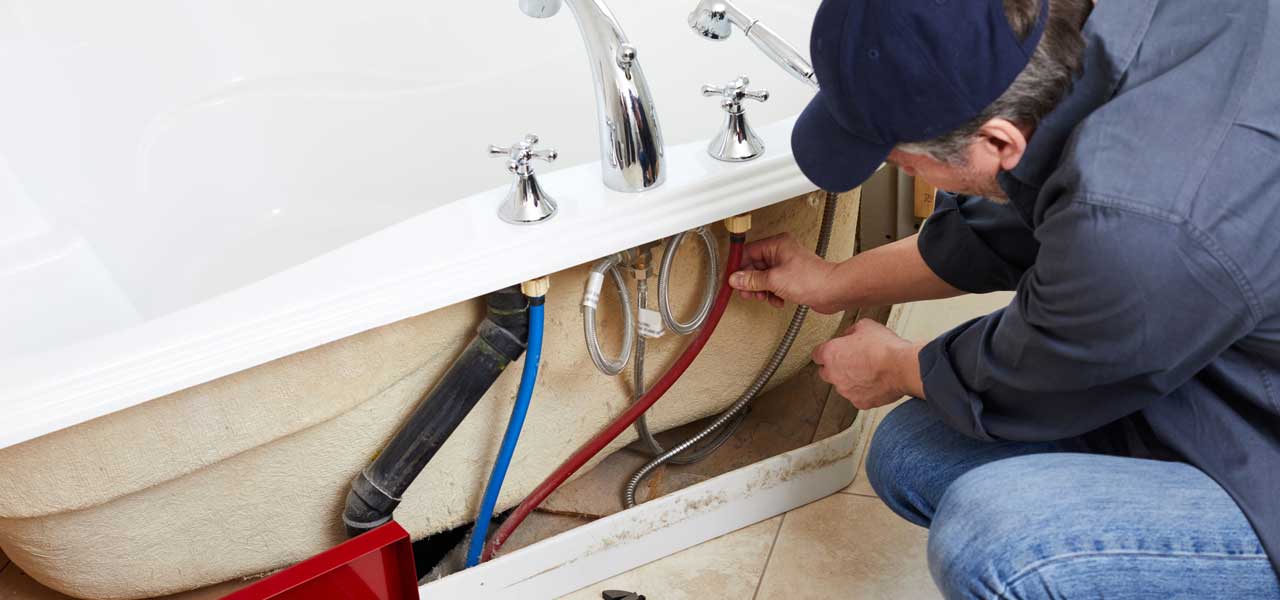We have uncovered this article on Installing A Bathtub directly below on the net and felt it made good sense to relate it with you on this page.

Setting up a bath tub isn't specifically brain surgery, but it does call for solid plumbing, woodworking, and often, tiling skills. Replacing an old bath tub with a new one is likewise a reasonably challenging task. If the old tub is easily obtainable, the project can relocate speedily; if you have to open up a wall surface to remove the old bathtub and also position the new bath tub, the task is much harder. In either situation, the task is within a residence handyman's abilities, although you will certainly need a helper to leave the old tub as well as embeded in the brand-new one. Make sure you have certified on your own for the job and are comfortable attempting it. Instead of employing a service provider to take control of a halfway-completed task, it is better to consider employing one before you begin. Possibilities are you may need an expert plumber to make tube connections.
This post will certainly aid you install a new bathtub in your bathroom if you have already gotten a brand-new bathtub and also do not need to change the arrangement of your previous supply of water pipelines.
Your devices and also product list need to comprise the following:
Removing Old Taps
If you need to replace old faucets with brand-new ones as a part of your installment, after that the first thing you need to do is separate the water. After doing so, activate the taps to drain any kind of water remaining in the system. The procedure of getting rid of the existing faucets can be fairly bothersome as a result of the limited accessibility that is commonly the situation.
Utilize a basin wrench (crowsfoot spanner) or a faucet device to reverse the nut that connects the supply pipes to the taps. Have a towel prepared for the staying water that will come from the pipes. Once the supply pipelines have actually been gotten rid of, utilize the exact same tool to loosen the nut that holds the faucets onto the bath/basin. You will certainly require to stop the single taps from transforming throughout this procedure. When the taps have actually been eliminated, the holes in the bath/basin will have to be cleaned of any old securing substance.
Before proceeding to fit the new faucets, contrast the pipe connections on the old faucets to the brand-new taps. If the old taps are longer than the brand-new faucets, then a shank adapter is required for the brand-new taps to fit.
Fitting New Touches
If the tails of the brand-new taps are plastic, then you will certainly require a plastic adapter to prevent damages to the thread. One end of the adapter fits on the plastic tail of the tap and also the various other end provides a link to the existing supply pipelines.
If you need to fit a monobloc, after that you will certainly require minimizing couplers, which connects the 10mm pipeline of the monobloc to the conventional 15mm supply pipe.
Next off, position the faucet in the mounting opening in the bath/basin ensuring that the washing machines are in area between the tap as well as the sink. Safeguard the tap in position with the producer given backnut. When the faucet is securely in position, the supply pipes can be linked to the tails of the taps. The taps can either be attached by using corrugated copper piping or with regular tap ports. The former type needs to be linked to the tap finishes initially, tightening just by hand. The supply pipes can later be attached to the various other end. Tighten up both ends with a spanner after both ends have been linked.
Installing the Tub
Making use of the two wood boards under its feet, position the bathtub in the called for position. The wooden boards are practical in evenly spreading out the weight of the bath tub over the location of the boards instead of concentrating all the weight onto four little factors.
The next objective is to guarantee that the tub is leveled all round. This can be achieved by inspecting the level as well as changing the feet on the tub till the spirit level checks out degree.
To install faucets, fit all-time low of the furthest versatile faucet port to the proper supply pipe by making a compression join; after that do the same for the other faucet.
Switch on the supply of water and also check all joints as well as brand-new pipework for leakages and tighten them if needed. Load the bathtub and likewise examine the overflow outlet and also the regular outlet for leaks.
Ultimately, fix the bath paneling as explained in the supplier's instruction manual. Tiling and sealing around the bath tub needs to wait until the bathtub has actually been made use of at the very least once as this will settle it right into its last placement.
Preparing for the Installation
First of all, the sustaining structure provided with the bathroom should be fitted (if required) according to the manufacturer's instructions. Next, fit the taps or mixer to the bathtub. When fitting the tap block, it is important to make sure that if the tap comes with a plastic washer, it is fitted in between the bathroom as well as the taps. On a plastic bath, it is also sensible to fit a supporting plate under the taps device to stop pressure on the bath tub.
Fit the adaptable faucet ports to the bottom of the two faucets utilizing 2 nuts and olives (sometimes supplied with the bathtub). Fit the plug-hole electrical outlet by smearing mastic filler round the sink electrical outlet opening, and after that pass the outlet through the hole in the bath. Make use of the nut provided by the maker to fit the plug-hole. Take a look at the plug-hole electrical outlet for an inlet on the side for the overflow pipe.
Next, fit completion of the adaptable overflow pipeline to the overflow outlet. After that, screw the pipeline to the overflow face which need to be fitted inside the bathroom. Ensure you use all of the provided washing machines.
Connect the trap to the bottom of the waste electrical outlet on the tub by winding the string of the waste outlet with silicone mastic or PTFE tape, and screw on the trap to the outlet. Attach all-time low of the overflow tube in a comparable manner.The bath ought to now prepare to be suited its last setting.
Tiling Around the Bathtub
In the area where the bathroom satisfies the ceramic tile, it is required to seal the accompanies a silicone rubber caulking. This is necessary as the installation can move enough to fracture an inflexible seal, causing the water to permeate the wall in between the bathroom as well as the tiling, resulting in complications with wetness as well as possible leakages to the ceiling listed below.
You can select from a selection of coloured sealers to blend in your fixtures and also fittings. They are sold in tubes and also cartridges, as well as are capable of securing spaces up to a size of 3mm (1/8 inch). If you have a bigger gap to load, you can load it with twists of drenched paper or soft rope. Remember to constantly fill up the bathtub with water prior to sealing, to permit the motion experienced when the tub remains in use. The sealer can break fairly very early if you do not take into consideration this motion before securing.
Additionally, ceramic coving or quadrant floor tiles can be utilized to edge the bathroom or shower tray. Plastic strips of coving, which are easy to use and reduce to size, are additionally quickly readily available on the market. It is advisable to fit the floor tiles using water-resistant or water-proof sticky and also cement.
Bathtub Installation
How Important Is A Bathtub To Your Home?
High-quality baths, showers, and other bathroom updates are necessary when considering a smart investment in your home. It’s a room that you go to every day and one that is constantly being used by guests.The bathroom is one of the top trafficked rooms in a home and also one of the most valuable in terms of home resale.
Install Piping Before Tub
You will be using your existing drain and waste vent system, but pipes required include the hot and cold water supply lines and a pipe leading to a shower head. A mixing valve and shower head are also needed. Air chambers may be required.
Position the Tub
Lower the tub into place so that the continuous flange fits against the wall studs and rests on 1’x4' or 2’x4' supports. Anchor the tub to the enclosure with nails or screws inserted through the flanges into the studs.
NOTE: Remember, bathtubs and shower stalls may require support framing. A bathtub filled with water is extremely heavy, so check building codes and framing support before installing the tub.
Assemble Drain Connections
Assemble the bathtub drain connections by connecting the tub overflow with the tub drain above the trap, not beyond it. The trap will have a compression fitting that screws over the arm of the overflow assembly.
Place a Pipe For the Shower Head
First, locate a brass female threaded winged fitting and attach it to a framing support via a screw or a nail. Then run a pipe up the wall for the shower head. Sweat or solder the other side of the brass fitting to the top of the pipe.
Attaching Hot and Cold Water Lines
Attach your water lines for both hot and cold by sweating these directly into the hot and cold ports of the mixing valve. The mixing valve will be how water enters the tub’s system, not by the pipes themselves.
Install the Spout
Extend a piece of 1/2 inch pipe, or whichever length is specified in the manufacturer’s instructions, for the tub spout. Sweat on a male threaded fitting at the end of the pipe or use a brass nipple of the proper length and a 1/2 inch cap.
NOTE: At this point you should have your rough-in plumbing work inspected before proceeding further.
Check For Leaks
Restore the water pressure and check the drain connection and the supply pipes for any sign of leaking.
estore the Bathroom Wall
Replace the wall with moisture-resistant drywall as a base for your wall covering. Seal the joints between the wall and your new tub with silicone caulk as protection against water seepage.
https://www.berkeys.com/2016/12/02/bathtub-installation-dallas/

We are very involved in Installing A Bathtub and I'm hoping you enjoyed the new entry. Are you aware of someone else who is serious about the niche? Take a moment to share it. Thanks a lot for your time. Don't hesitate to stop by our blog back soon.
Schedule A Service